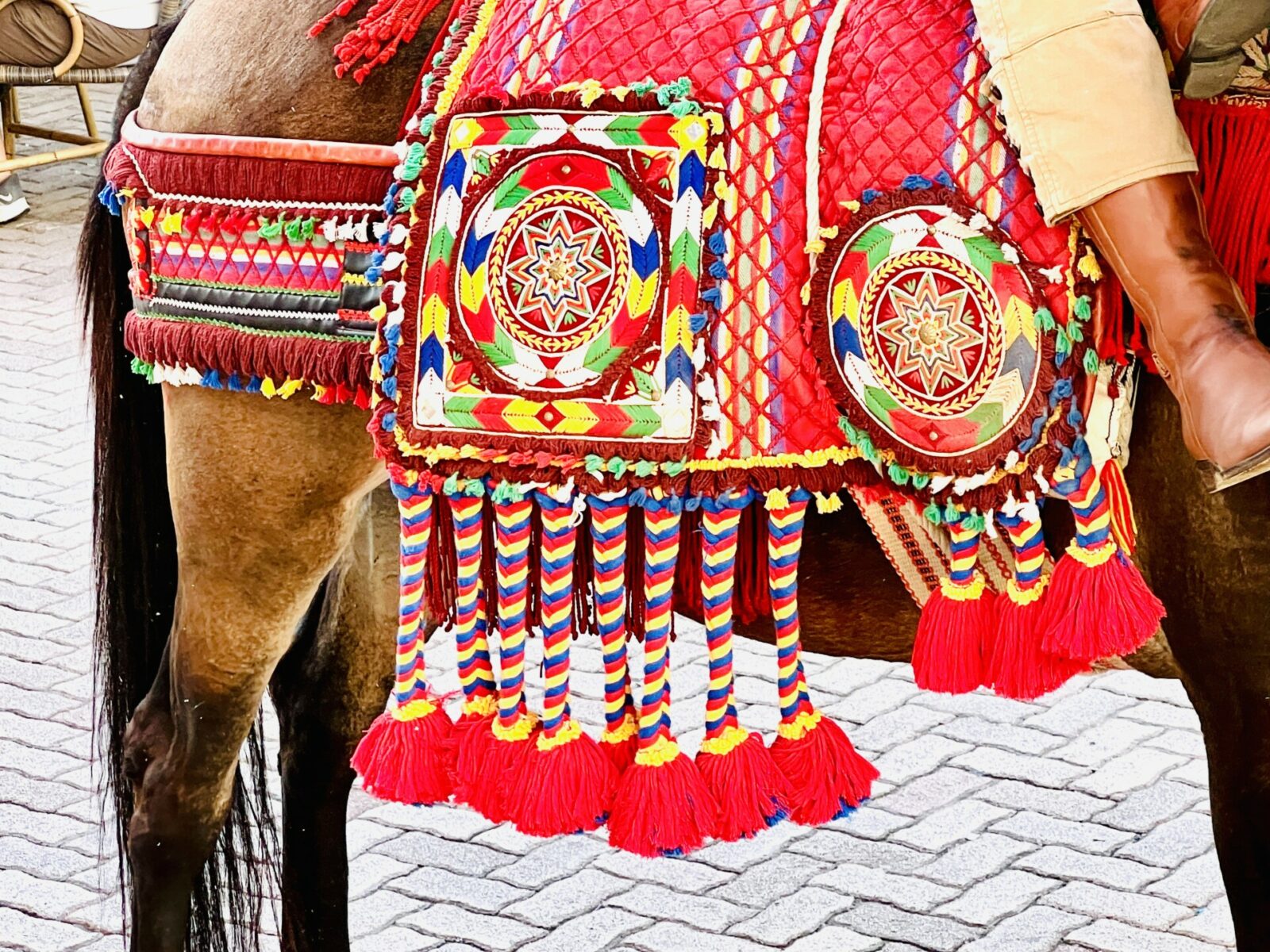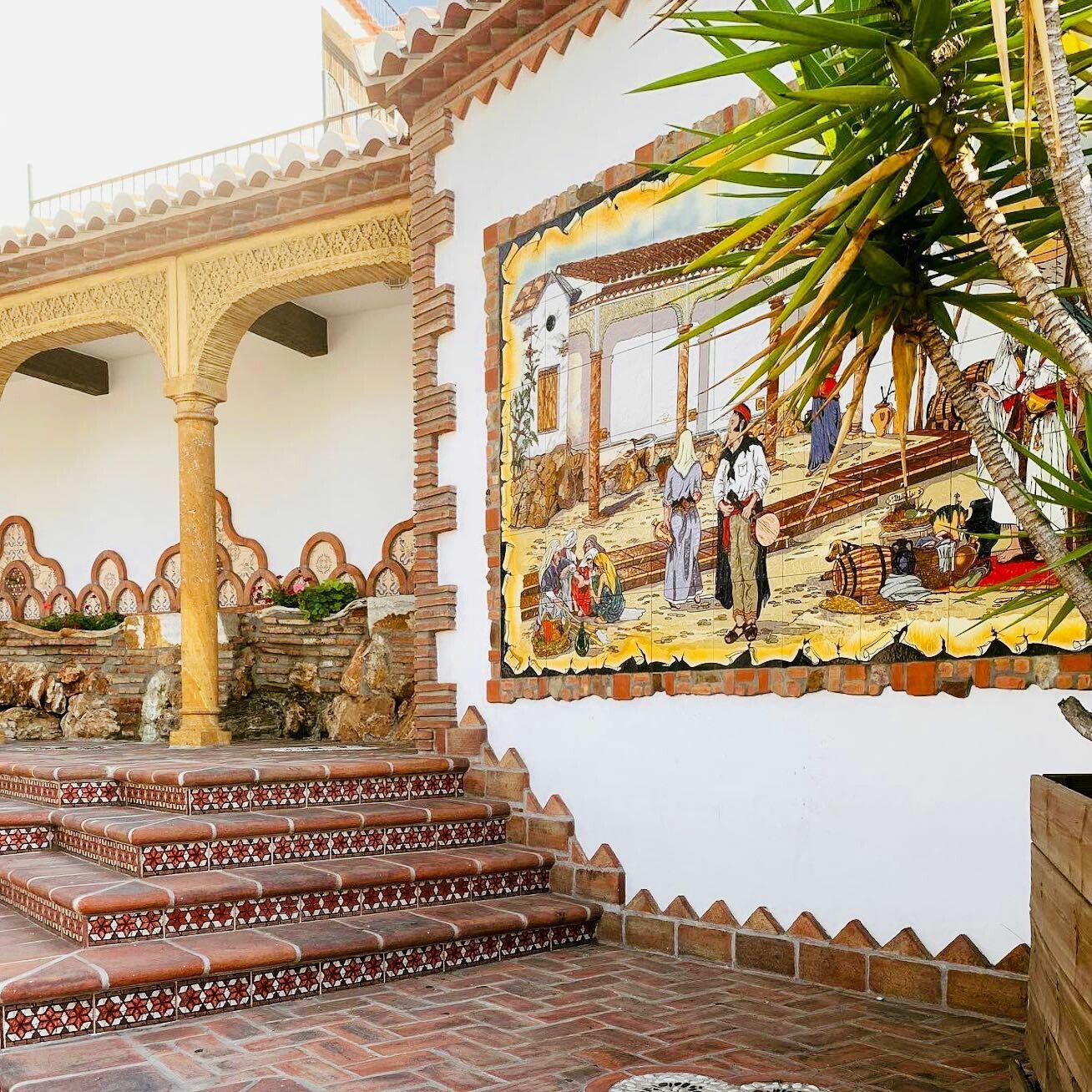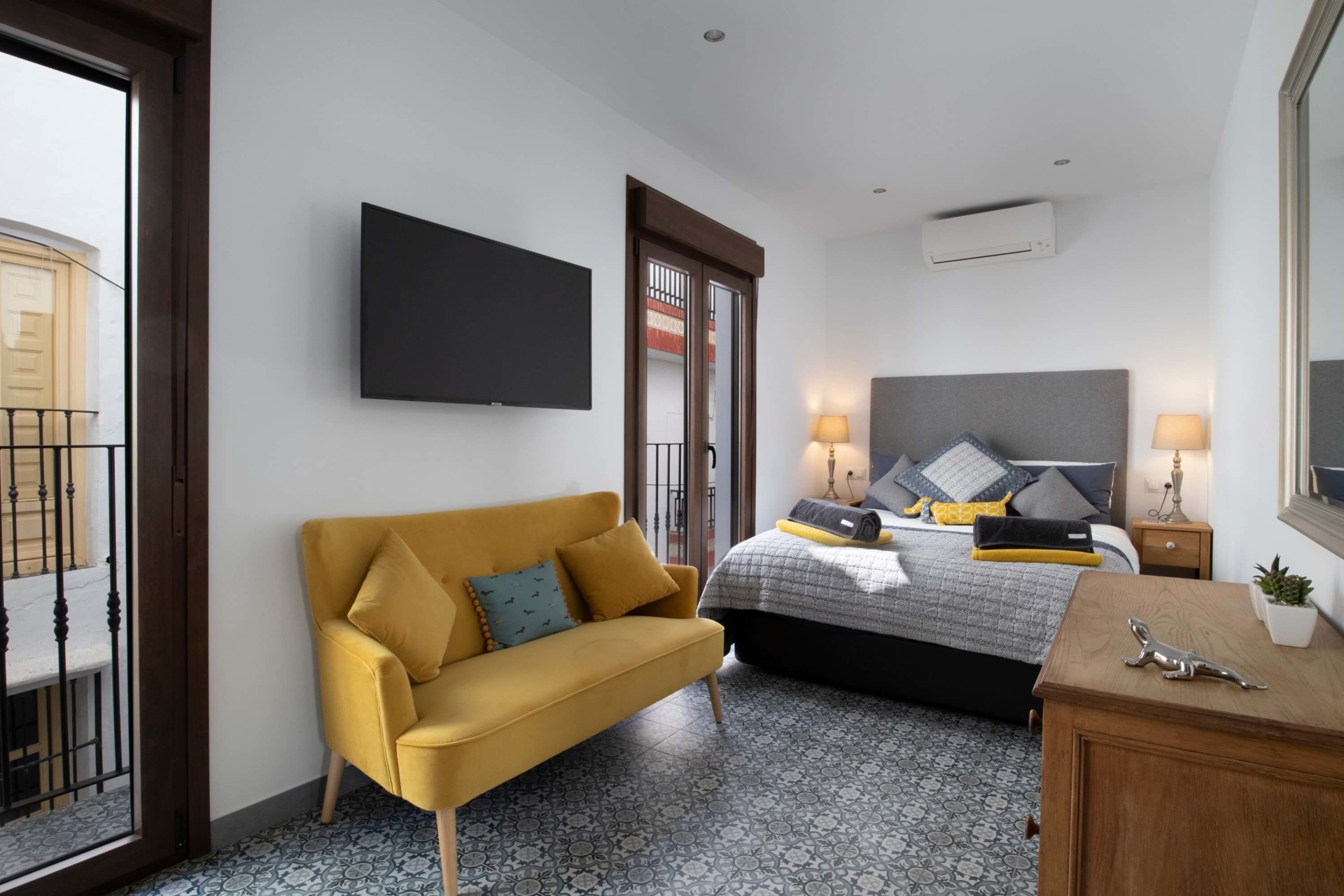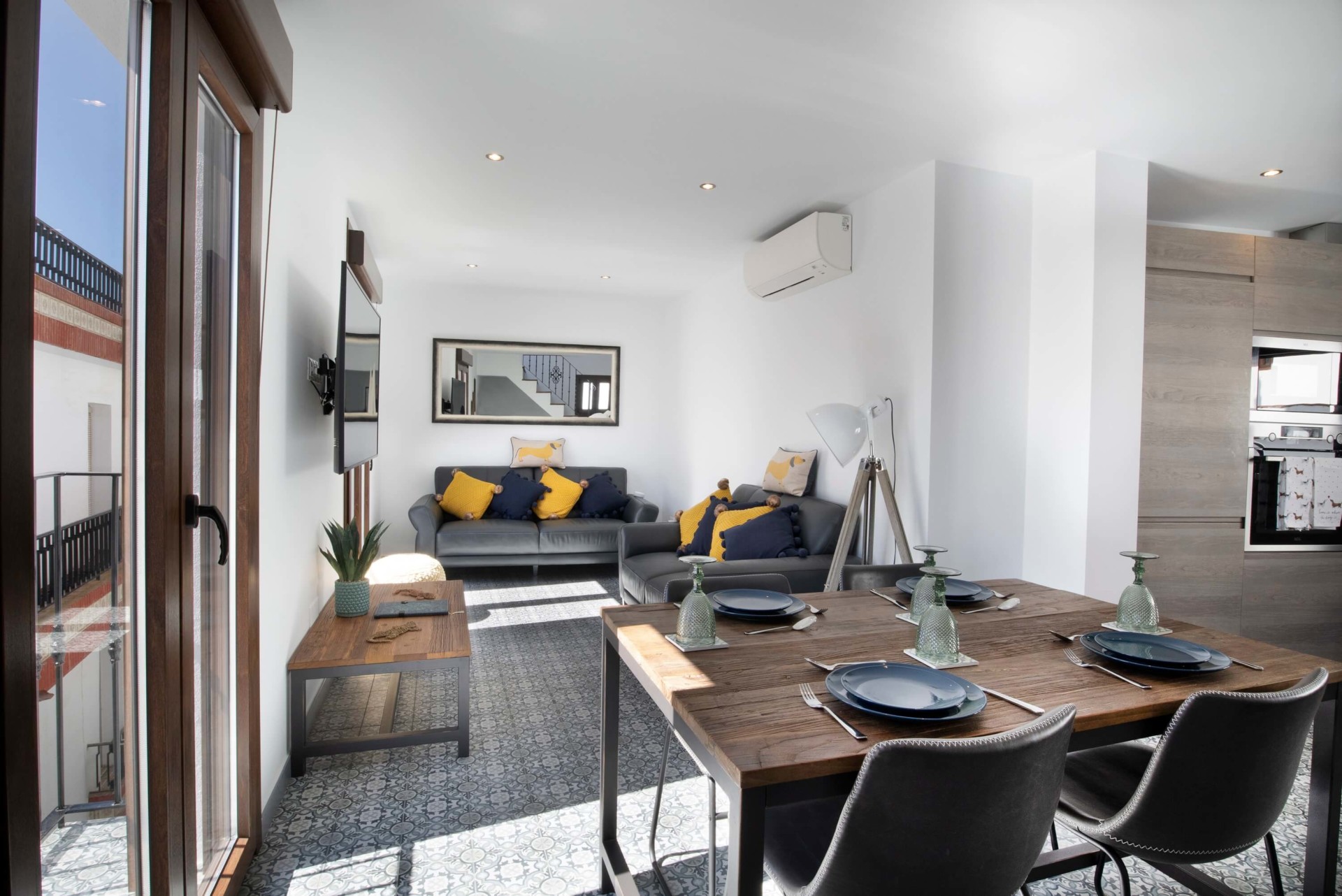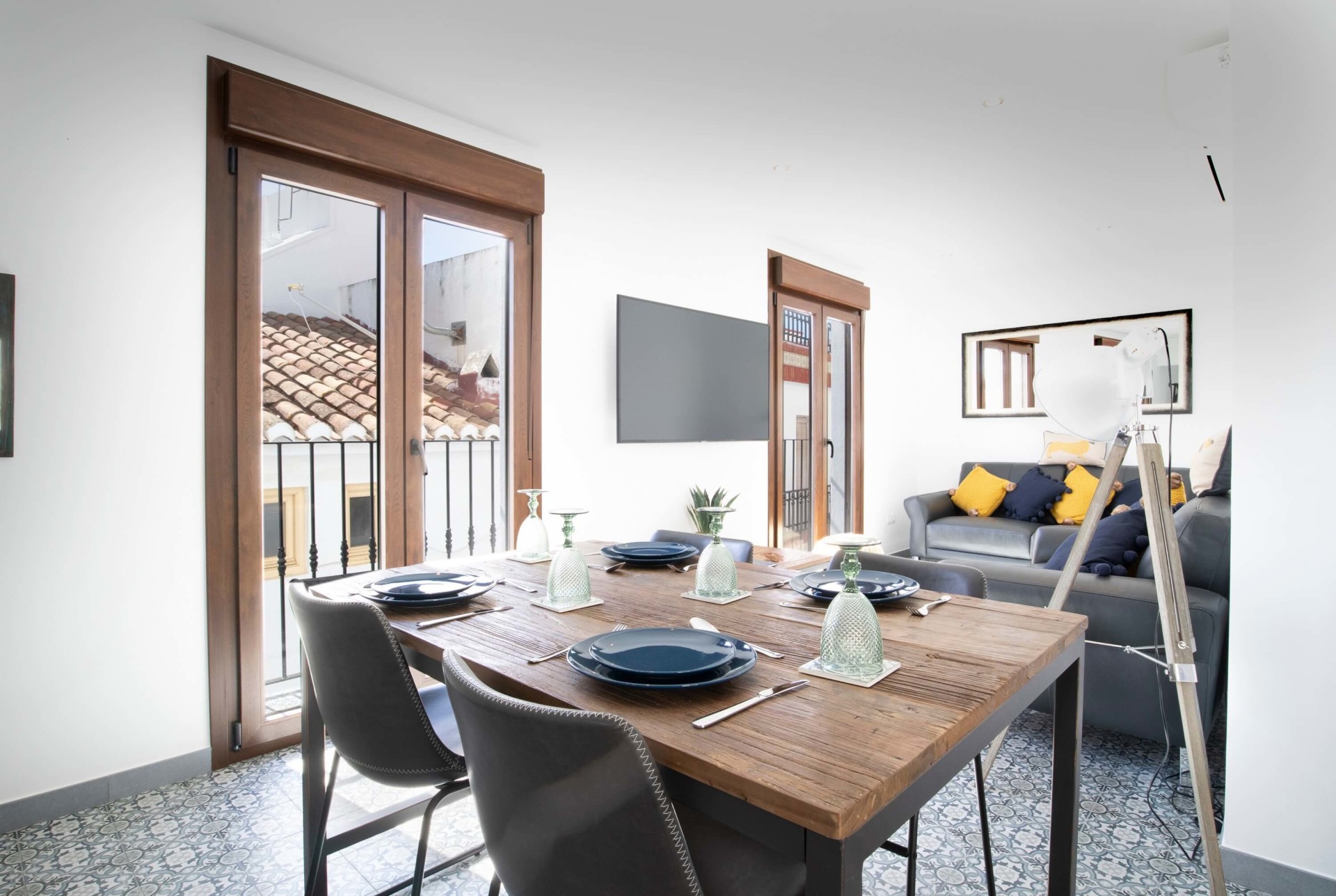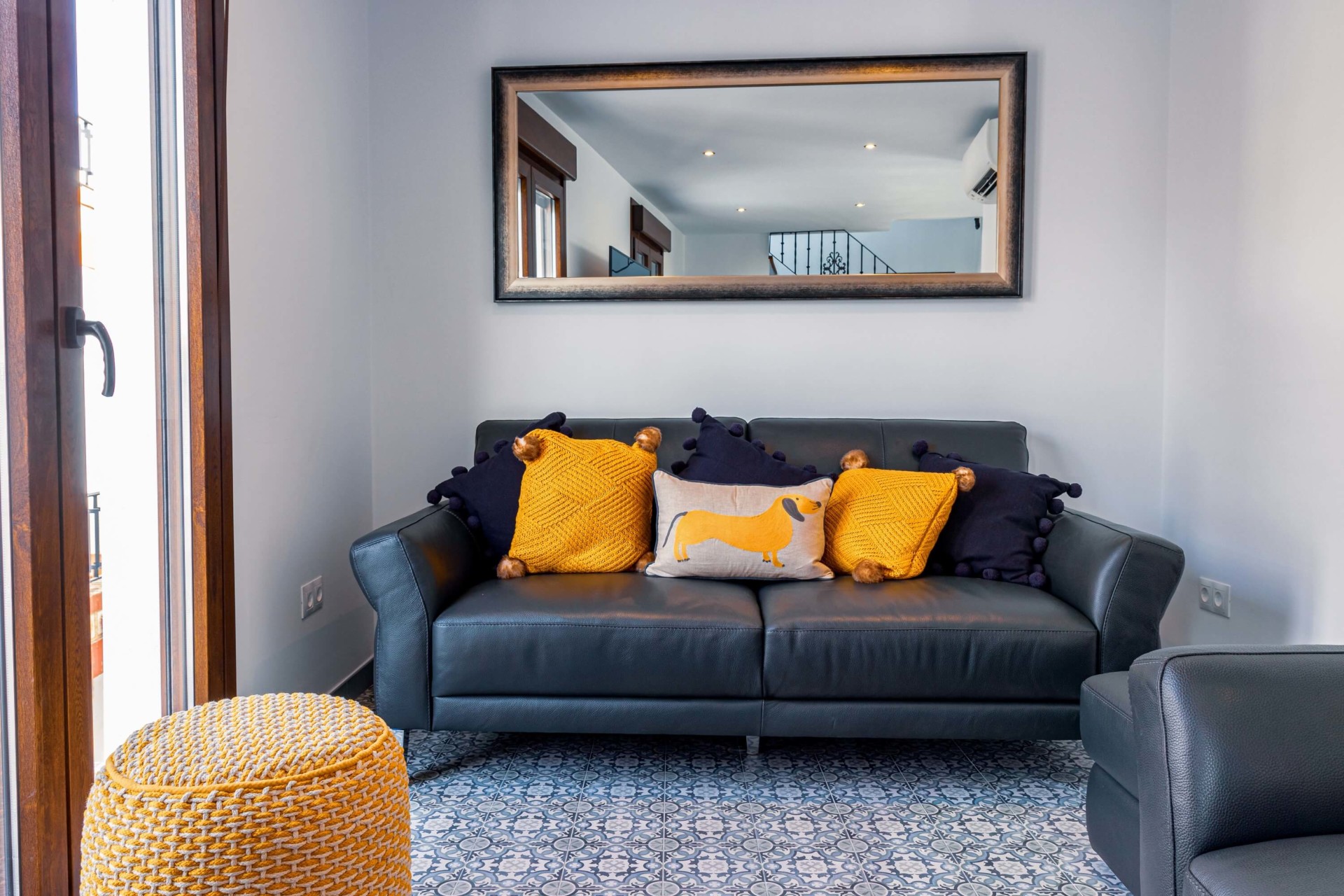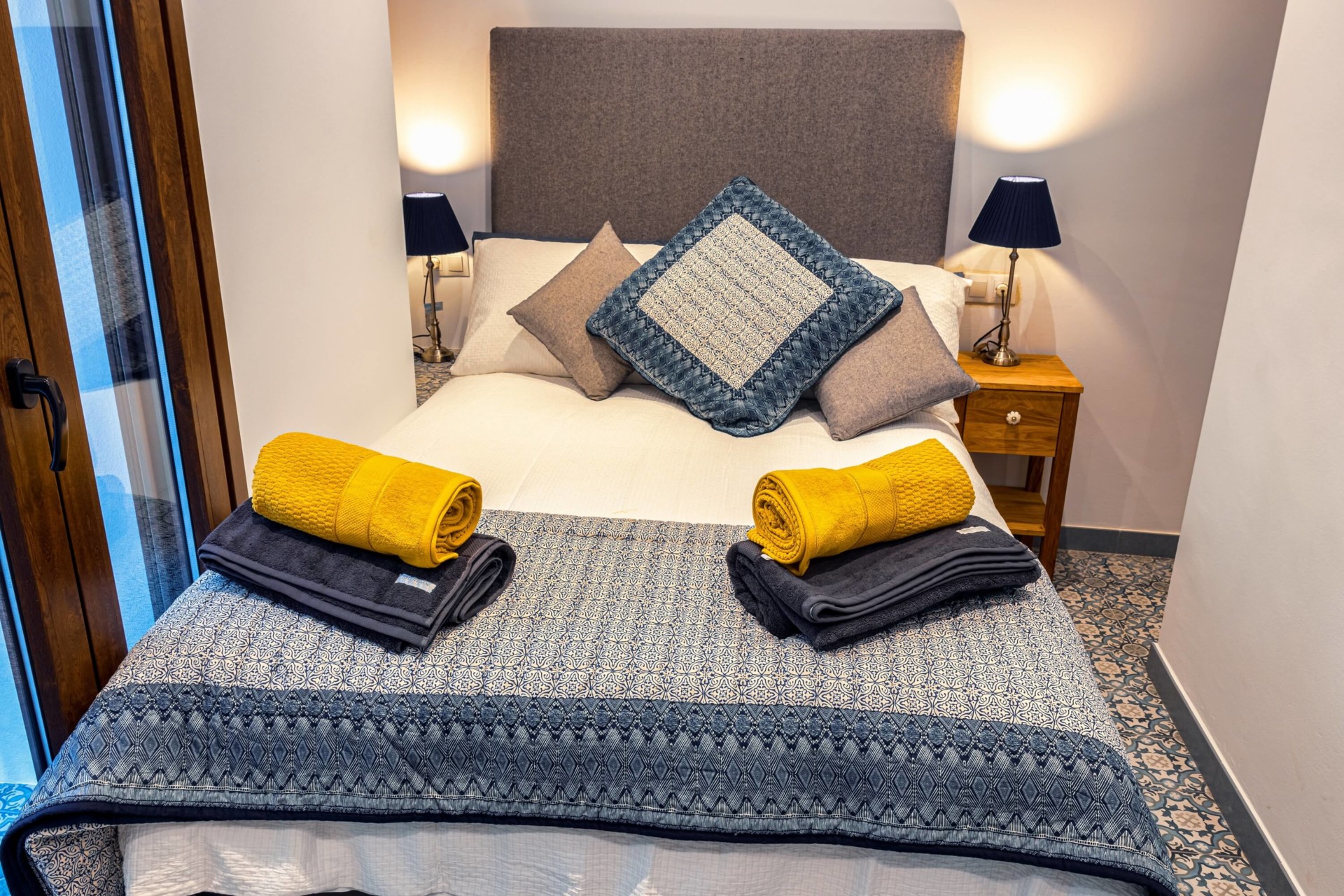The Alhambra de Granada or Alhambra Palace is one of the most special day trips we have taken. Steeped in history, with architecture and design from many periods. In 1984 it was given the accolade as a UNESCO World Heritage site. Furthermore, it is listed as one of the Twelve Treasures of Spain. A list of sites deemed to be of great historical and cultural value to the Kingdom of Spain. The Alhambra was initially created as a military zone and was given its name due to its reddish walls, meaning Red Castle in Arabic. In the daytime, it has a silver-tone, but under the moon takes on a golden glow. It is situated on top of the rocky hill al-Sabika, to the west of the city of Granada and in front of the areas of Albaicin and the Alcazaba. It sits on the banks of the river Darro. The Alhambra has a view over the whole city, and many believe that other buildings existed on that site before the arrival of the Muslims. The area is surrounded by ramparts and has an irregular shape. The valley of the river Darro lays on its northern side, with the valley of al-Sabika to its southern border and the street Cuesta del Rey Chico runs along the eastern side. The Cuesta del Rey Chico also forms a border between Albaicin and the Generalife gardens which sit on top of the Hill of the Sun (Cerro del Sol).
THE HISTORY OF THE ALHAMBRA PALACE
The earliest information on the Alhambra Palace Granada dates from the 9th Century. In the year 889, Sawwar ben Hamdun had to seek refuge in the fortress of Alcazaba. The Alcazaba is one of the oldest parts of the Alhambra along with the Vermilion Towers (Torres Bermejas). It was then repaired and extended by Sawwar during the fights between Muslims and Muwalladins [Christians who converted to Islam and lived among the Muslims]. Some population began though not much until later because the Ziri kings based their residence on the hill of the Albaicin. Alhambra castle was added within the ramparts during the 9th century. The castle became a military fortress with a view over the whole city. The old part of the Alcazaba was reinforced and the 16 x 16m Watch Tower (Torre de la Vela) and the Keep (Torre del Homenaje) were added.
A NEW PERIOD DAWNED
Water canals were built from the river Darro, warehouses and deposits were built and the palace and the ramparts were started. Though it was not until the arrival of the first king of the Nasrid dynasty, Mohammed ben Al-Hamar (Mohammed I, 1238-1273), in the 13th century, that the royal residence was established in the Alhambra. This event marked the beginning of the Alhambra’s most successful period. The building of the Watch Tower and the keep continued under the reign of Mohammed II(1273-1302) and Mohammed III (1302-1309), who it is said also built public baths and the Mosque (Mezquita), on the site of which the current Church of Saint Mary was later built. Yusuf I (1333-1353) and Mohammed V (1353-1391) are responsible for most of the constructions of the Alhambra that we can still admire today. They brought improvements to the Alcazaba and the palaces. Adding the Patio of the Lions (Patio de Los Leones) one of the most famous features of the Alhambra. Along with the Justice Gate (Puerta de la Justicia), the building of the Baths (Baños), the Comares Room (Cuarto de Comares) and the Hall of the Boat (Sala de la Barca). In fact, very little remains from the period of the Nasrid Kings.
ALHAMBRA PALACE GRANADA, A MUST-SEE!
We are going to walk you through a few of our very favourite places, but don’t we worry we will leave plenty to surprise you with when you get there. We include plenty of photos in our blogs, but it is true to say, no photo can do this epic site justice. It is quite simply one of those places that will leave you completely in awe.
ALCAZABA
The Alcazaba fortress is the oldest part of the Alhambra. Built in the 13th century by the Sultan Alhamar, the founder of the Nasrid dynasty, after he fled from northern Andalucia and established what was to be the last Moorish stronghold against the Christian crusaders. When the Christians took the city in the 15th Century, they carried out many works to repair the Alcazaba. During its interesting history, it was used as a State prison. Like the Alhambra, the Alcazaba was abandoned and not cared for, for a long time and it was not until the late 19th century and beginning of the 20th century that the restoration, exploration and plumbing works were started.
THE MANY AREAS OF THE ALCAZABA
The Alcazaba incorporates several areas. Namely the Puertas de las Armas, the Torre del Homenaje, Torre de la Vela, the Plaza de las Armas and the Plaza de los Aljibes. “Puertas de las Armas” is one of the main buildings of the Alcazaba, taking up the entire lower level. “Torre del Homenaje” was in fact part of Granada before the Alhambra was built. When the Alcazaba walls were re-inforced, the Torre del Homenaje was converted into an impenetrable fortress. “Torre de la Vela” It’s bell tower and flags often feature in images of the Alcazaba. It flies four flags, which are the Andalusian, Granadian, Spanish and European flags.
“Plaza de las Armas” is the official entrance to the Alcazaba. It contains a rainwater cistern and the foundations of several houses. “Plaza de los Aljibes” It derives its name from the cisterns that were constructed in the square at the end of the 15th century. It lies in a trench between the Alcazaba and the palaces of Puerto del Vino and Palacio de Carlos V.
Palace of Carlos V
The palace was built after the city was seized in 1492 by the Catholic Monarchs. It is found in the Medina. It is known by the Granadinos as the Palacio de Carlos Quinto. However, its actual name is the Casa Real de la Alhambra or Royal Manor of the Alhambra. The 16th Century palace is a large and imposing structure which is solidly built. It has the accolade of being one of the first Renaissance buildings created outside of Italy. Designed by a student of Michelangelo it is modelled on the Palazzo Pitti building in Florence, Italy. A major feature of the palace is the huge bronze rings set high above the ground. It is built around a circular courtyard in Roman tradition. It was the first fully-fledged Royal palace to have been built in Spain, though no King of Spain ever resided there. Its construction took 110 years, twice that of the Notre Dame. Unfortunately, it was abandoned in the economic decline during the 18th century and fell into a poor state. It was later restored under the Franco dictatorship becoming a National Museum.
The Nasrid Palace
This stunning enclosure contains some of the most spectacular features of the Alhambra. Not least, the Palace of Comares, the Lion’s Palace, the Mirador de Daraxa and the Golden Room Courtyard. Marvel at the Moorish-style architecture, with its perfect lines of symmetry. It has a strong and robust exterior with a fragile and ornamental interior. You will be in awe of the intricate stucco walls, the brightly coloured tiles and the antique wooden ceilings. It was built for the Spanish Muslim rulers. The courtyards and gardens display many elements of times gone by with a Persian and Muslim influence. Note entry to this is by ticket only, ensure you have bought your tickets in advance. You will be given a time of entry which you must adhere to, it is preferential to queue about 20-30mins before your entry time. Take water with you as it can get very hot.
The Palace of Comares
This palace functioned as the official place of residence of the Sultan, making it one of the many important palaces in Alhambra. Close to the Arrayanes Courtyard, the Palace of Comares is another highlight of Alhambra. Featuring porticoed galleries, which draw your eye. During construction, a special effort was put into making the palace as exquisite as possible. The northern end of the palace houses the Barca Hall and the Embajadores Hall, both of which are a must-visit. The Salón de los Embajadores (Hall of the Ambassadors) is the largest room in the Alhambra and occupies all the Torre de Comares. This was a majestic reception room, housing the throne of the sultan. The room is, the sides being 12 m in length, while the centre of the impressive dome is 23m high. The grand hall has views in three directions. In this sense, it was a “mirador” from which the palace’s inhabitants could gaze outward to the surrounding landscape. There are a series of oval medallions with inscriptions, interwoven with flowers and leaves. There are nine windows, three on each façade. The fascinating ceiling is decorated with white, blue and gold inlays formed from crowns and stars.
Golden Room Courtyard
The Golden Room is also known as the Audience Chamber and is another highlight of the Nasrid Palace. It is an Andalusi patio and in its midst is a beautiful fountain made of marble. Set in the middle of the courtyard, at ground level in order to not disturb conversation. The water was bought here to this hill along artificial water channels. A gate links this royal courtyard with the Reja courtyard at one side. The Golden Room’s ceiling was painted in pure gold by Catholic Kings, giving it a striking opulence. There is also a courtyard through an arched portico with three arches.
Generalife and Gardens
The name ‘Generalife’ means ‘garden of the architect’. The house was a recreational house for the Sultans of Granada. Stunning orchards and gardens surround the house. At the entrance, it has an amphitheatre which hosts annual shows during the Music and Dance festival. The Generalife is located on the hill Cerro del Sol, adjacent to the Alhambra. Generalife comprises of a series of large gardens. Every corner holds a novelty and a feast for the eyes, with a minimum of obtrusive buildings. Water is a big feature and a must-do is to ascend the water ladder. Here the cold water runs through the handrails, very refreshing in the summer. The complex consists of the Patio de la Acequia (Court of the Water Channel or Water-Garden Courtyard), which has a long pool framed by flowerbeds, fountains, colonnades and pavilions. You will want to spend some time, even in the height of summer with many visitors it is a truly reflective place. In 1931 the present-day gardens were started before being completed by Francisco Prieto Moreno in 1951. Walkways are paved in traditional Granadian style forming a mosaic from pebbles. White pebbles are taken from the River Darro and black ones from the River Genil. There is an imitation of part of the Generalife at the Roundhay Park, in Leeds in England.
Some general info on the Alhambra Palace Granada
Getting to the Alhambra Palace takes about 1 hour 30 from Competa in the car. Of course, you can go cross-country but we take the A7 and the A44. The route has stunning and dramatic scenery. Although there are many sites to see in Granada, we recommend that you allow yourself the full day to explore the Alhambra Palace and Gardens and the various elements within them. We also advise purchasing tickets in advance because otherwise you may not get in at all and if you do it is unlikely tickets will be left for the Nasrid Palace. At the time of writing the general admission ticket, which includes everything is €14 + if you book online a €1.40 booking fee. You will be given an allocated booking time to Nasrid Palace, if you miss it you will not get in. It is wise to queue 20-30 minutes beforehand as the queues can be quite long. There are other tours such as the Garden Tour or various night tours also. Opening hours are 8.30 am -6 pm in Nov – February and 08.30 am-8 pm in March to October (the box office opens half an hour earlier). They open Monday to Sunday. This is a map of the suggested route to take around the large site of the Alhambra.
In Summary, the Alhambra Palace Granada is …
A magical day out! Too hard to name our favourite things but we still chat about the beautiful tiles, the magical architecture and the fabulous gardens. We recommend everyone visits the Alhambra Palace Granada and we will return, because every time we do, we see something different! Our guests always say how much they have enjoyed a day out here, so we highly recommend you try it too! If you do, we would love it if you would pop back to our blog and let us know what you thought!
The Competa Escapes Holiday Rentals
Two luxury townhouses are available for holiday rental in the heart of Competa. They feature plunge pools and fantastic views. Two bedroomed and ensuite. Heating and aircon throughout. Perfectly situated for all the bars, restaurants and exploring the area. Please take a look at our website when considering your next holiday



